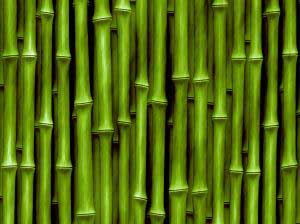Living here in Austin, I can attest that under the right conditions, bamboo doesn’t need the care (read: water) that even organic cotton does in order to thrive. There are yards all over the city where bamboo planted as a privacy screen has busted out all over. It’s like kudzu, only taller. So the idea of using bamboo for fabric is extremely appealing. Plant it, ignore it, harvest it, fabricize it. It’s that last part that’s a problem. How exactly is thick, reedy bamboo turned into soft, fuzzy fabric anyway? The answer is often chemicals. As the Organic Clothing blog and Victoria Everman have reported, a little bit of bamboo fabric is made by mechanical means in a very labor intensive process where they basically mash it up. The rest is made by cooking the bamboo in solvents that are neither eco-friendly nor safe for workers. Rebecca Clarren puts it like this in “Bamboo shoots and trees” on Salon.com: The perception that all bamboo is grown without pesticides is also not necessarily correct, says Clarren, and she also notes that shipping the stuff all the way from China isn’t the greenest idea ever. I have no idea how to compare that to the savings in water from not using cotton, but she has a point. The Organic Clothing blog notes that friendlier processes for producing bamboo fiber are starting to emerge, but they are not yet widespread. I’m always looking for green products that don’t make me think. It’s so tempting to declare something “safe” so I don’t have to work so hard researching products. In this case, though, it seems that asking a few questions about how the bamboo was grown and processed is necessary before congratulating myself for living more lightly on the earth.
